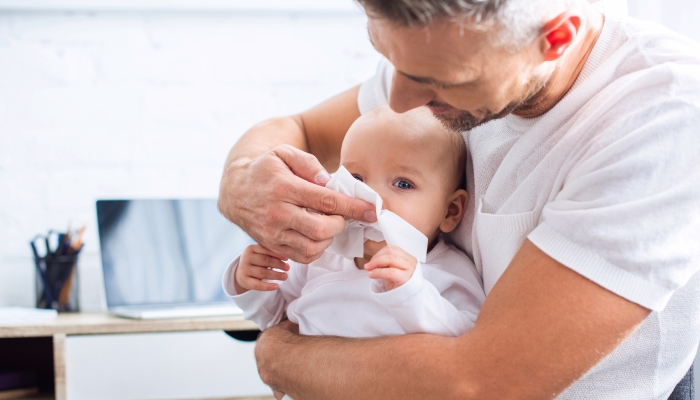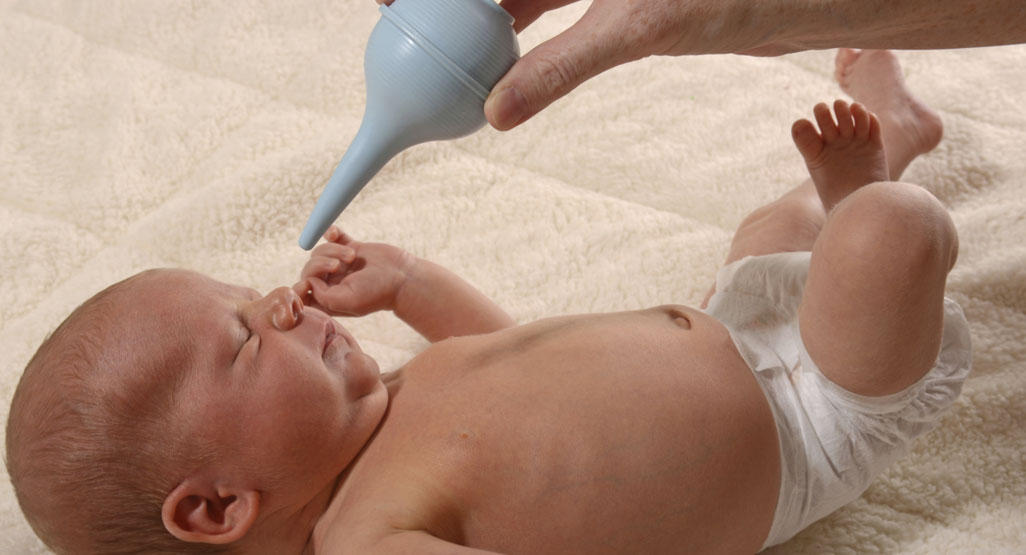Congratulations on playing the mom role in life. It’s okay if you’re scared. It’s all part of the learning process in life. Now it’s the time to become an expert in everything that your child is unable to do. This is what parenting looks like.
Some days you’ll be enjoying their little laughs, and there will be times when the only thing you’ll be hearing is their endlessly crying. And on the other hand, you’ll have to learn, well, how to remove mucus from baby noses. Stay tuned to learn everything about the proper care of your little munchkins.
If you’re not familiar with the term mucus, that’s a fluid that comes from the throat, nose, or mouth of the baby. The role of the mucus is to keep the baby’s health in order. However, even if it’s for a good cause, sometimes, if the mucus comes in excessive amounts, it can cause trouble.
Things That Affect Excessive Mucus in Babies
You may be already familiar with the fact that a baby in the growing process is more prone to colds and infections. This is because the immune system of the baby it’s still developing. In that case, we all have to be careful and watch out for them.
When a bacteria tries to attack the baby, in defense, its tiny body starts to appear in larger quantities. What can cause mucus in a baby can trigger excessive mucus even in adults. Here is the list of the things you need to be aware of when you’re around the little ones.
- When the weather changes more frequently, meaning in one day, you may experience all four seasons, which can lead to more mucus.
- Make sure you keep your baby’s toys clean and the environment of your baby because it can also affect them to produce more mucus.
- Make sure you don’t light any cigarettes in their presence
- Some chemicals you use for cleaning can affect the mucus
- If your baby is exposed to someone who already has a cold, it’s more likely for the viruses to influence your baby
Aside from these things, if your baby has excessive mucus, it may be a sign of an illness like asthma, bronchiolitis, pneumonia, allergies, etc.
The Mucus Color Scale
A different color says different things. That is why you should know exactly the color and the meaning behind it. Let’s get started with the pyramid of colors.
- When you notice that the mucus from your baby it’s clear, you can be sure that you have a healthy baby.
- When the mucus it’s gray or ticker white color, there are two options. Either your baby it’s okay or has some slight sinus infection.
- If the mucus is yellow, make sure that your baby is dehydrated, and it may catch a cold that’s not so serious.
- If the colors vary from green to brown, it’s a sign of a bacterial and some viral infection that’s happening in their little bodies.
- If the mucus is red or brown, the red represents blood, and the brown is dirt in the mucus. This is a concerning sign, and you should immediately check with your doctor.
What to Know About Mucus
You should know that the mucus is the normal part of your baby growing up. The mucus is actually the friend of the baby because it keeps the baby healthy when they’re unable to do that on their own. If you notice coughing in your baby, sneezing, breathing difficulties, vomiting, gagging, or even diarrhea, it’s a sign that the mucus has reached the baby’s nose or throat.
The main problem with too much mucus is that it can make the baby feel uncomfortable, and the first thing you need to do is to clean the mucus without leaving it there to clean itself on its own. Even though, as adults, we all at first are looking for doctors, it may not be a great idea. Because even pediatricians aren’t about prescribing medical treatments. We’ll tell you how to remove mucus from baby noses if you continue to read.
How to Clean the Mucus
If you have a cloth that is soft, wipe the mucus carefully and slowly. You can lay down your baby on your knees while gently rubbing their back to make the gravity do its work and take off the mucus. Feed the baby, and don’t let them dehydrate. A warm bath it’s always a good idea to remove the mucus but make sure you watch the baby the whole time.
Saline spray is used for clearing out the nostrils. If you have a pet in your home, make sure that all their hair is vacuumed because even a tiny one can cause problems for your baby. If you’re familiar with humidifiers, it’s used to clean the air. And make sure to clean the matching to avoid any molds growing in regularly.
Bulb syringe as the famous act of cleaning extra mucus
Before you start using this method, the first thing you need to do is boil water and then cool it for the process of cleaning. Make sure that your hands are clean and wash them twice. The baby’s head should be lower than the chest. Squeeze the air from the bulb while keeping it away from the baby.
While you’re still squeezing the bulb, put them in the nostrils of your baby gently. Don’t place the bulb too far. After that, you slowly release your bulb while you allow it to vacuum the mucus. After that, you should clean the bulb by washing it and repeat the process in both nostrils.
What Not to Do
Never give any medications to your baby on your own. Don’t consider flushing your baby’s nose with water and other fluids. Never use vapor rubs because studies have shown that vapor rubs are harmful. Even though you’ve learned how to remove mucus from baby noses, make sure that you bring your baby in for daily checkups in the doctors’ room.









